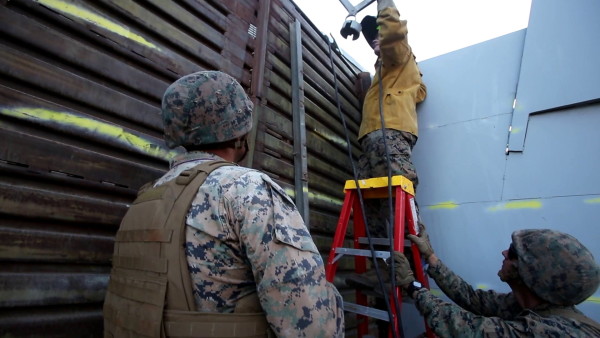

The U.S. military’s seemingly never-ending mission supporting civil authorities along the southwestern border will last at least another year.
On Sept. 3, Defense Secretary Mark Esper approved a request from the Department of Homeland Security to provide a total of up to 5,500 troops along the border until Sept. 30, 2020, Lt. Gen. Laura Richardson, commander of U.S. Army North, said on Monday.
Those troops will be a combination of National Guard and active-duty service members, Richardson told reporters during the Association of the United States Army’s annual exposition in Washington, D.C.
Richardson said she did not have an estimate for how much the deployments to the border will cost through the end of next September. Once Congress passes a fiscal 2020 defense spending bill, the Pentagon will foot the bill for the continuing border mission.
U.S. troops began deploying to the border last October after President Donald Trump claimed without evidence that a human caravan of Central American asylum seekers contained hundreds of criminals, who wanted to invade the United States.
That November, then-commander of U.S. Army North Lt. Gen. Jeffrey Buchanan indicated that the military’s mission at the U.S./Mexico border could be over by Christmas, but it has been extended since then.
Stopping immigrants and asylum seekers from entering the United States has been a major priority for the president, who reportedly wanted a snake-filled moat dug along the southern border. Trump has denied wanting such a moat.
But on Nov. 1, 2018, the president told reporters that he wanted U.S. troops to respond to any asylum seekers who threw rocks at them as if they were under fire.
“We will consider that the maximum that we can consider that, because they’re throwing rocks viciously and violently,” Trump said. “You saw that three days ago — really hurting the military. We’re not going to put up with that. They want to throw rocks at our military, our military fights back. We’re going to consider it — I told them: Consider it a rifle. When they throw rocks like they did at the Mexico military and police, I said: Consider it a rifle.”
Later that month, then-Defense Secretary James Mattis assured reporters that U.S. troops assisting the border patrol would not be armed. When Task & Purpose asked Mattis what steps the Pentagon was taking to make sure active-duty troops did not shoot anyone — as happened in 1997 — Mattis was dismissive.
“I’m not going to dignify that,” Mattis said on Nov. 21. “They’re not even carrying guns for Christ’s sake.”
